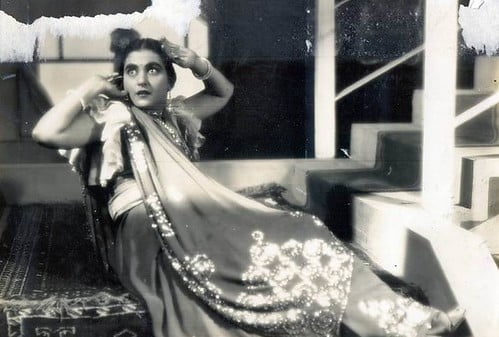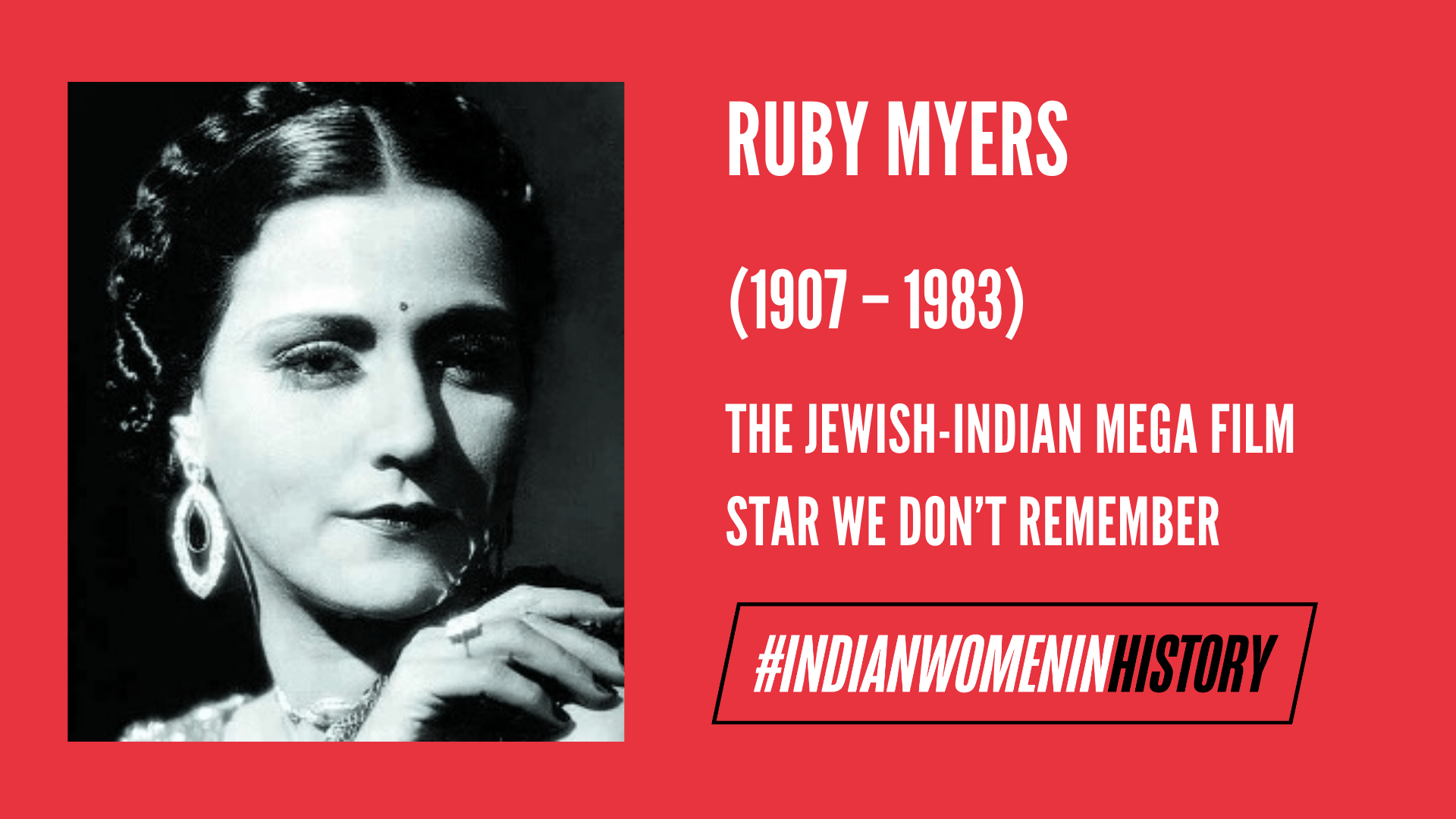In the 1920’s, the newfound world of cinema was somewhat settling into the minds of the masses—a splendid universe of moving life-like visuals, never before seen. But like any endeavour, any institution situated in history, it was inherently sexist. Women’s participation in films, especially that of actresses, were a rare occurrence. But there were a select few that emerged and rose to be the stars they were. One of them was Ruby Myers, popularly known as Sulochana in the Indian silent film era.
Image Credits: Wikipedia
Early Life and Background
Ruby Myers was born in Pune, in 1907. She was chubby, petite and brown eyed, not conforming to the mainstream norms of beauty. Before her entry and subsequent rise to stardom in the film industry, she worked as a telephone operator. She belonged to a Baghdadi Jew family, a community now practically extinct in India. Their origins can be traced from Iraq and Jewish diasporas around the Mediterranean and Indian oceans, going as far back as the 18th century.
They established themselves mainly in cities like Mumbai and Kolkata, engaging in a fruitful trade network involving various commodities. Some Baghdadi Jews settled in India as a result of turbulence—they were fleeing persecution from Muslim Turkish rulers of Baghdad—yet they went on to create a name for themselves, becoming important contributors to Indian economy and society.
Career
Image Credits: JWeekly
Ruby Myers was discovered by Mohan Bhavnani of Kohinoor Film Company while she was working her job. She initially rejected the offer, bound by the patriarchal constraints that disallowed women from participating in certain fields, terming them as ‘immoral’ or ‘unfit’ for women. However, it seems to be that Bhavnani’s film maker’s intuition saw something in her, which led him to persist, not giving up and it would be apt to say his efforts paid off to a degree unimaginable.
Having no prior experience or knowledge of acting or the film industry in general, Ruby’s career took off with her debut role in Veer Bala (1925). She went on to act in a lot of movies, spanning a number of genres like Typist Girl (1926), Balidaan (1927), Cinema Queen (1926) and Wildcat of Bombay (1927).
Having no prior experience or knowledge of acting or the film industry in general, Ruby’s career took off with her debut role in Veer Bala (1925). She went on to act in a several movies, spanning a number of genres like Typist Girl (1926), Balidaan (1927), Cinema Queen (1926) and Wildcat of Bombay (1927). In fact, Ruby, who renamed herself as Sulochana after entering the industry, played eight different characters in Wildcat of Bombay. She stepped into the role of a gardener, a policeman, a Hyderabadi gentleman, a street urchin, a banana seller and a European blonde. Her ability to do so is proof enough of her talent.

She was also the centre of the romantic film genre for a while, starring in three super hit romantic movies in the late 1920’s – Madhuri (1928), Anarkali (1928) and Indira B.A. (1929), all directed by R.S. Chaudhari. This was a time when she was at the top of her career, reigning the industry, moving on to Imperial Film Company. A Baghdadi Jew phone operator had become one of the highest paid actresses of her time.
Also read: Janki Devi: The Woman Who Took Part In Swadeshi Movement | #IndianWomenInHistory
Later Life
Her life wasn’t without its due obstacles. In the 1930’s, the talkies emerged into the picture, effectively rendering silent films obsolete. As the production of sound became a realizable feature owing to technological development, dialogues and scripts became a crucial part of films. Actors and actresses were required to be fluent in Hindustani, a hurdle for Jewish origin Ruby. However, showing true resilience and determination, Ruby Myers took a year off from work, devoting herself to learning the language. And she came back ever ready to dazzle her audience again, with the talkie version of her previous hit, Madhuri.
As the production of sound became a realizable feature owing to technological development, dialogues and scripts became a crucial part of films. Actors and actresses were required to be fluent in Hindustani, a hurdle for Jewish origin Ruby. However, showing true resilience and determination, Ruby took a year off from work, devoting herself to learning the language.
She was also in a relationship with one of the most well-known actors of the time, D. Billimoria with whom she worked exclusively for a while. Ruby continued to reign supreme, leading a life of luxuriousness that wasn’t very accessible to many women back then – all thanks to her hard work and persistence.
However, her career slowly took a downward turn, coinciding with her personal relationship. She left Imperial but didn’t find many film offers for herself. The industry had started to show signs of its ever present patriarchal outlook – older women actresses were no longer enough; newer, more ‘attractive’ women were needed. Not only this, the 1947 Dilip Kumar starrer Jugnu was banned because it showed a romance between an old professor and charming Ruby – an attack on the moral foundations of society.
Legacy and Death
Under the name of Sulochana, Ruby Myers had made quite a mark in the entertainment industry. In the 1930’s, she went on to set up her own studio, Rubi Pics. In 1973, she received the Dada Saheb Phalke Award, the highest honour that can be bestowed upon an individual in Indian cinema, for her valuable contributions. She has also been portrayed in a documentary titled Shalom Bollywood (2017) that attempts to showcase the immense cultural contributions made by the Jewish Indian community to the entertainment industry. She died in Mumbai, on 10th October 1983.
Also read: Mithan Tata: The Barrister Who Advocated Women’s Voting Rights | #IndianWomenInHistory
Ruby Myers was an immensely talented woman, but not remembered for her contributions. Our history is colourfully marked by such women from diverse ethnic backgrounds, and perhaps it is time that we start paying a little more attention, digging into our archives to give them the recognition they deserve.
References
About the author(s)
Anindita is an English Literature student who enjoys reading feminist literature and eating copious amounts of Chinese food, all along unlearning tradition and relearning rebellion.




